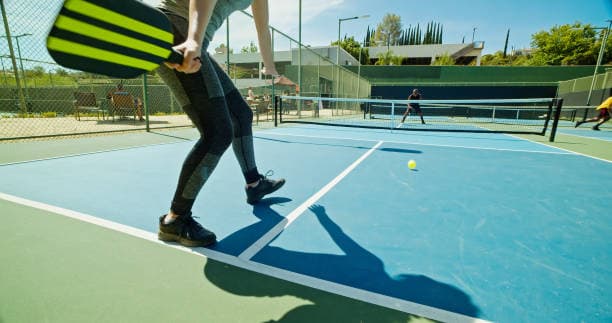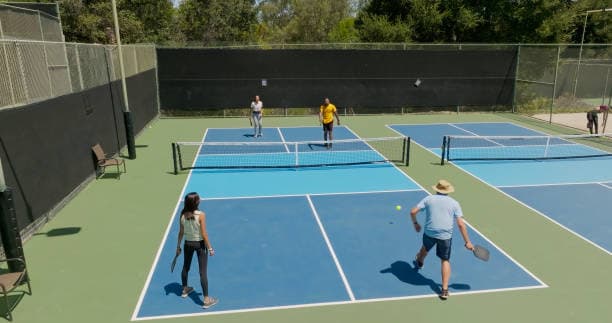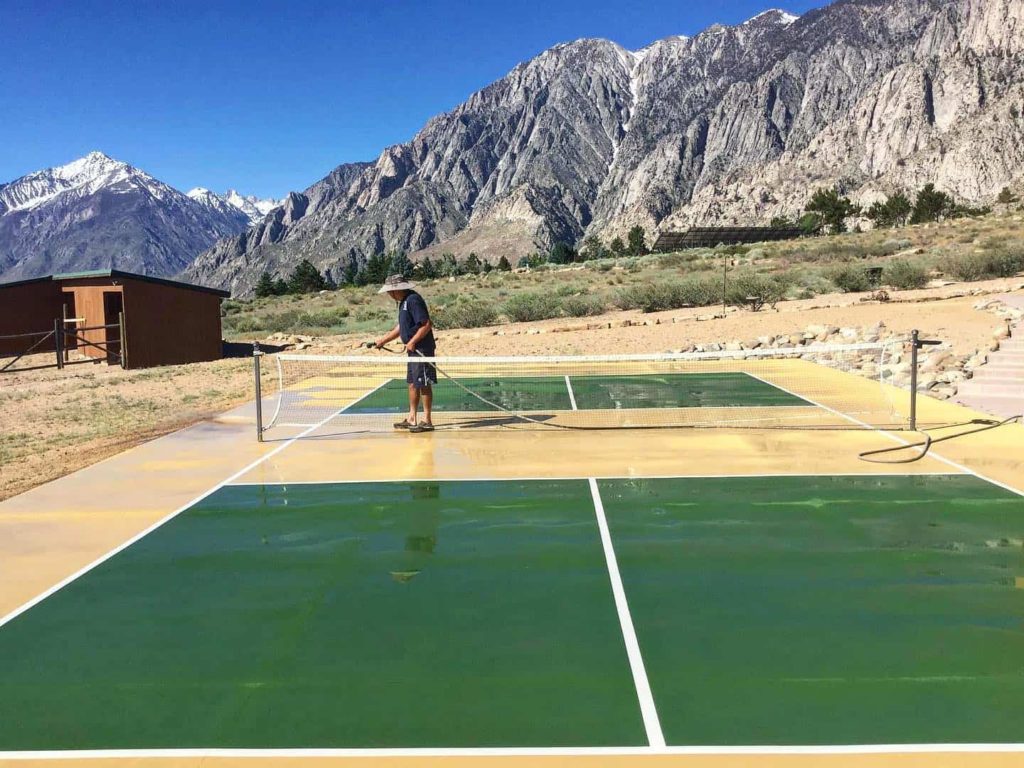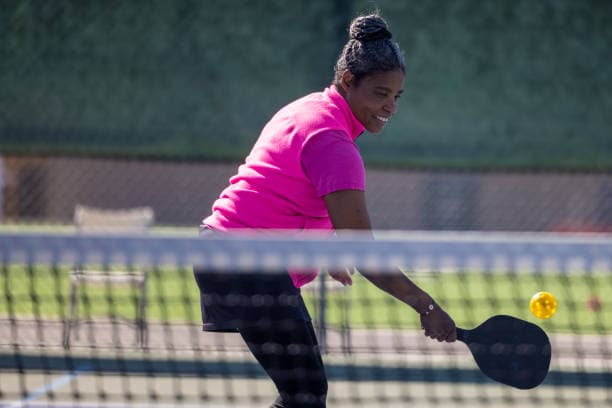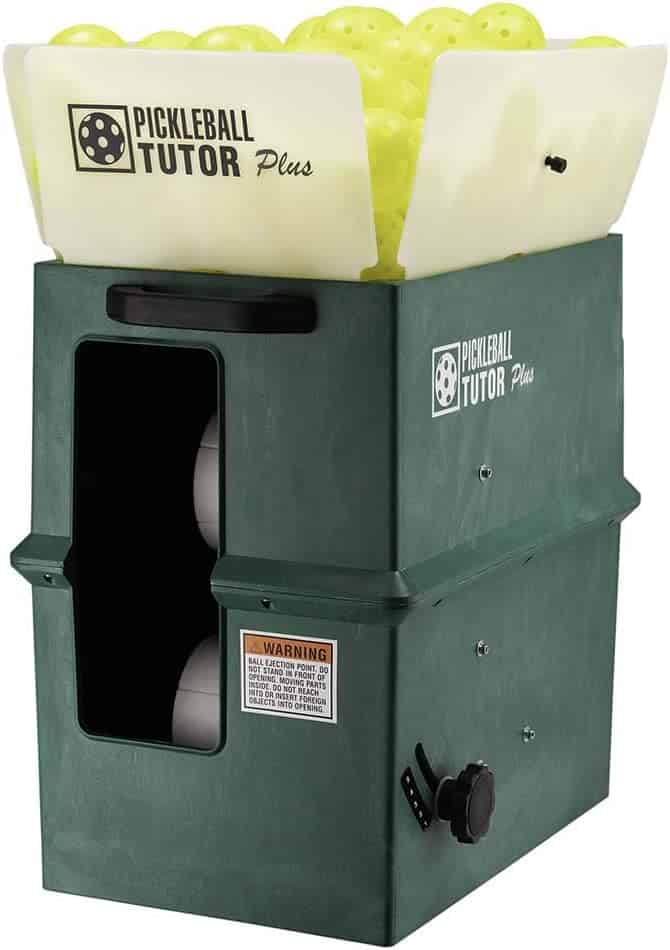Pickleball Third Drop Shot
Pickleball has experienced a remarkable surge in popularity over the past decade, captivating players of all ages and skill levels. With its compact court size and smaller paddles, pickleball offers a unique blend of agility, strategy, and finesse. One particular shot that stands out among the various techniques employed in this dynamic game is the third drop shot.
What is the Third Drop shot and Why is it Important?
The third drop shot is a strategic maneuver employed in pickleball that involves softly hitting the ball just over the net with backspin to force opponents into uncomfortable positions on the court. This delicate shot requires precision and finesse rather than power or speed. Known for its subtlety, the third drop shot can disrupt opponents’ rhythm by forcing them closer to the kitchen line (non-volley zone) or causing them to move backward rapidly.
Mastering this technique is crucial for players aiming to control rallies, dictate play at the net, and create opportunities for attacking shots by setting up their opponents with well-placed drops. By incorporating the third drop shot into their repertoire players can introduce an element of surprise and keep their opponents off balance.
Its significance lies in its ability to strategically manipulate the game’s pace and dynamics, making it an invaluable weapon in a player’s arsenal. With precise execution and strategic placement, the third drop shot becomes not only a tool for scoring points but also a means to control the flow of play, exploit opponents’ weaknesses, and gain a competitive advantage.
Understanding the Basics of a Drop shot
Purpose of a Drop Shot in Pickleball
In the dynamic game of pickleball, a drop shot is a finesse shot played with the intention to softly place the ball over the net, just clearing it and landing close to the net on your opponent’s side. Unlike powerful shots that aim to drive opponents back or create opportunities for aggressive play, drop shots are effective tools for changing the pace of the game and catching opponents off guard.
The primary purpose of a drop shot is to force your opponents closer to the net to disrupt their positioning and buy yourself time to anticipate their response. It can be particularly advantageous when used tactically during rallies where opponents are positioned further back on the court. The third drop shot is simply using the drop shot on the third shot of a rally by the serving team. The sequence of events would go like this: serve, opponent returns the ball, the serving team hits a drop shot.
Different Types of Drop Shots
Drop shots can vary in execution based on factors such as ball trajectory, spin, and direction. One common type is the soft drop shot that requires delicate touch and minimal power.
This shot involves gently brushing underneath the ball with an open paddle face, imparting enough backspin for it to land softly over the net without bouncing too high. On the other hand, a hard drop shot may be employed when there is little space between you and your opponent at the net.
This variation incorporates more power into your swing while still aiming for a controlled descent over their reach. My personal favorite, the angled drop shot can be strategically used by directing opponents towards either sideline or diagonally across the court line – creating more challenging returns for them.
Mastering the Third Drop Shot Technique
Grip
When it comes to executing a successful third drop shot in pickleball, having the right grip is paramount. The continental grip provides the ideal balance between control, precision, and versatility. This grip involves placing the base knuckle of your index finger on the slanted side of the paddle handle while allowing your other fingers to wrap comfortably around.
It allows you to maintain a firm hold on the paddle while still having enough flexibility to generate spin and finesse. With a continental grip you have better control over the angle at which you strike the ball which enables you to execute accurate drop shots with ease.
Stance
To successfully hit a third drop shot, maintaining the proper stance is crucial. Start by positioning yourself slightly behind the baseline, ensuring your feet are shoulder-width apart for stability and balance throughout your shot. Bend your knees slightly while keeping your weight evenly distributed between both legs.
This balanced stance will help you react quickly to incoming shots and maintain stability as you execute your drop shot. By keeping a low center of gravity and maintaining good body posture you enhance your ability to move swiftly towards the net after hitting the shot.
Swing
The swing mechanics play an integral role in achieving soft touch and finesse during a third drop shot in pickleball. As you prepare your swing, keep a relaxed grip on the paddle handle to avoid excessive power or spin that might send the ball sailing over the net with too much force. Remember, touch and feel is key.
Begin by bringing your paddle back slightly above waist level while flexing your non-dominant arm forward for balance. As you initiate your forward swing, focus on maintaining a smooth, controlled motion.
At the point of contact with the ball, emphasize a soft touch by using your wrist to snap and generate backspin. This backspin will create a gentle arc causing the ball to land softly over the net as well as spin back towards you, making it difficult for your opponents to return.
By mastering these key elements of grip, stance, and swing mechanics, you will elevate your ability to execute a third drop shot with finesse and precision. Practice these techniques diligently to develop muscle memory and improve your overall control over the shot.
Remember that repetition is essential in building consistency, so take the time to refine each aspect until it becomes second nature. A quick drill you can run with a friend is: serve, friend hits the ball back, hit your third drop shot at a targeted location in the opposition’s kitchen. Repeat this over and over. With practice you will soon be able to incorporate these techniques seamlessly into your game strategy and surprise your opponents with well-executed third drop shots.
Strategic Considerations for Third Drop Shots
Reading Your Opponents Court Position
One of the key elements in executing a successful third drop shot in pickleball is the ability to read your opponent’s position on the court. By paying close attention to their movements, you can identify prime opportunities for employing this strategic shot. Analyzing their positioning at the baseline or mid-court area is crucial.
If your opponent is playing closer to the baseline it signifies that they may not be fully prepared for a soft drop shot and might struggle to reach it in time. Similarly, if they are positioned at mid-court, it indicates that they are not as close to the net (or maybe not comfortable at the net) and may find it challenging to cover short shots effectively.
Recognizing Opponents Movement Patterns and Anticipation Skills
In addition to observing your opponent’s position on the court, recognizing their movement patterns and anticipation skills can greatly enhance your chances of successfully executing a third drop shot. Some players have quicker reflexes or possess exceptional anticipation abilities, making it essential for you to assess their style of play early on.
By studying how they react during rallies or even by analyzing previous points played against them, you can gain insights into their tendencies. This knowledge will help you anticipate where your opponent might move next and adjust your third drop shot strategy accordingly.
Ball Placement
Once you have analyzed your opponent’s positioning and movement patterns, it’s time to consider placement when aiming your third drop shot. Targeting open spaces away from opponents’ reach should be one of your primary objectives. Look for areas on the court where opposing players are less likely to anticipate or quickly retrieve shots comfortably.
These could include corners or wide angles that require opponents to cover more ground laterally or diagonally. Making your drop shot land precisely in these areas makes it significantly harder for opponents to return the ball effectively, increasing the likelihood of winning the point.
Using Angles
Incorporating angles into your third drop shot can be a game-changer. By skillfully directing the ball towards corners or sidelines you force your opponents to stretch beyond their comfort zones which diminishes their chances of making a successful return. The use of angles can also create additional challenges for opponents with regards to timing and footwork.
When using short angles be mindful of maintaining consistency and precision with your shots, ensuring that they land close enough to the net while still staying within the lines. By using angles intelligently and strategically you’ll keep your opponents on their toes and gain a significant advantage in dictating the flow of the game.
Counteracting Common Challenges with the Third Drop Shot
Dealing With Fast-Paced Opponents
When facing opponents who quickly advance towards the net it becomes crucial to deceive them and catch them off guard. One effective tip is to disguise your intention until late in your swing motion. By maintaining a consistent swing for both drop shots and other shots, you can keep your opponents guessing. Disguising your shots is all about the backswing. If the backswing stays the same for all your shots (lobs, drives, drop shots) your opponents won’t know what’s coming!
Varying the speed of your swings and using similar body movements for different shots will make it challenging for them to anticipate your next move. This element of surprise can give you that split-second advantage needed to execute a successful third drop shot.
Using Lobs as a Strategy Against Aggresion
Against aggressive opponents who frequently rush towards the net, incorporating lob shots into your repertoire can be highly advantageous. A well-executed lob sends the ball high into the air, forcing your opponents to retreat and giving you time to recover or prepare for a subsequent shot.
To use this strategy effectively focus on maintaining good technique while generating enough height on your shot. Add topspin if you can! Practice controlling both power and accuracy when aiming for maximum distance to force your opponents out of their comfort zone near the net.
Conclusion
Mastering the art of hitting a third drop shot in pickleball is undeniably challenging but immensely rewarding. By understanding the basics of a drop shot players can elevate their game significantly. With dedication and practice, your ability to hit third drop shots will become second nature on the pickleball court.
Remember that every challenge faced while attempting third drop shots presents an opportunity for growth and improvement in your overall playing skills. Embrace these challenges and remain confident in your abilities.
By incorporating the tips provided you will undoubtedly enhance your gameplay, leaving opponents impressed with your finesse and control. So, step onto the court with determination, adapt to any situation, and let each shot be a testament to your passion for the sport of pickleball!

